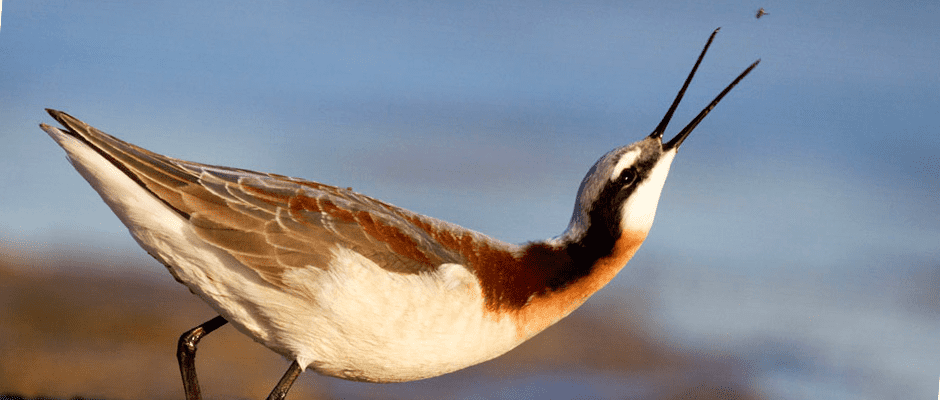Share this article
As lake level drops and salinity climbs, waterbirds vanish
Like many saline lakes in the western United States, water levels in Oregon’s Lake Abert are decreasing due to water diversions for agricultural operations, drought and climate change. Researchers recently found the falling water level and rising salinity is resulting in fewer waterbirds at the lake.
In the study published in Biological Conservation, lead author Nathan Senner and his colleagues — including Senner’s father, who served as senior author— used a variety of data to see whether the birds had in fact decreased on the lake and why. Some of the birds they looked at included Wilson’s pharalopes (Phalaropus tricolor), eared grebes (Podiceps nigricollis), California gulls (Larus californicus) and American avocets (Recurvirostra americana).
“This project was really born out of the observations a number of citizen scientists had been making at Lake Abert over the past few years,” said Senner, a postdoctoral researcher at the University of Montana who will be starting as an assistant professor at the University of South Carolina next year. Volunteers for the East Cascades Audubon Society in Bend, Oregon began conducting bird surveys at the lake in 2011 and shared their data and concerns with the National Audubon Society.
The team dug up 1990s Bureau of Land Management records to establish baseline populations. They also used information collected by a brine shrimp business owner at the lake who ultimately shut down his business after harvest declines. (The waterbirds feed on these shrimp and other invertebrates.) The team also used salinity information collected by an environmental geoscientist and combined the data to understand the state of the birds at the lake.
“It’s fun when you have a collaborative project, and you have different areas of expertise,” Senner said. “Everyone loved this place, and they worked together to bring all to bear on the same problem.”
Comparing current bird numbers to historical data, Senner and his team saw a large drop in populations. They also found that at times when the lake had the lowest water levels and highest salinity it had very few birds — or brine shrimp.
“For some species at those really high salinities, we see declines in abundance of up to 83 percent in comparison to what we would expect at that same time of year,” Senner said.
The other end of the spectrum also turned out to be problematic. The birds and invertebrates didn’t respond well to high water levels with low salinity. The sweet spot was somewhere in the middle. “There is a pretty narrow window of appropriate salinity and lake size for these places to maximize the abundance of birds and invertebrates that are saline specialists,” Senner said.
Senner recommends developing a comprehensive watershed management plan to calculate the amount of water needed for the lake to achieve appropriate salinity. Lake Abert served as a case study, he said, but the results can apply to other lakes where water levels are dropping, such as the Great Salt Lake in Utah and Walker Lake in Nevada.
Many of the species studied such as the phalarope and eared grebe are tied to saline lakes throughout their lifecycles, Senner said. “They’re not yet threatened, but that’s a good thing. When we look at saline lakes across the western U.S. and around the world, there is some dramatic trouble.”
Header Image: A Wilson’s phalarope catches a small insect as a snack at Lake Abert. Waterbird species are declining at the lake due to low water levels and high salinity. ©Tim Timmis/Audubon Photography Awards








